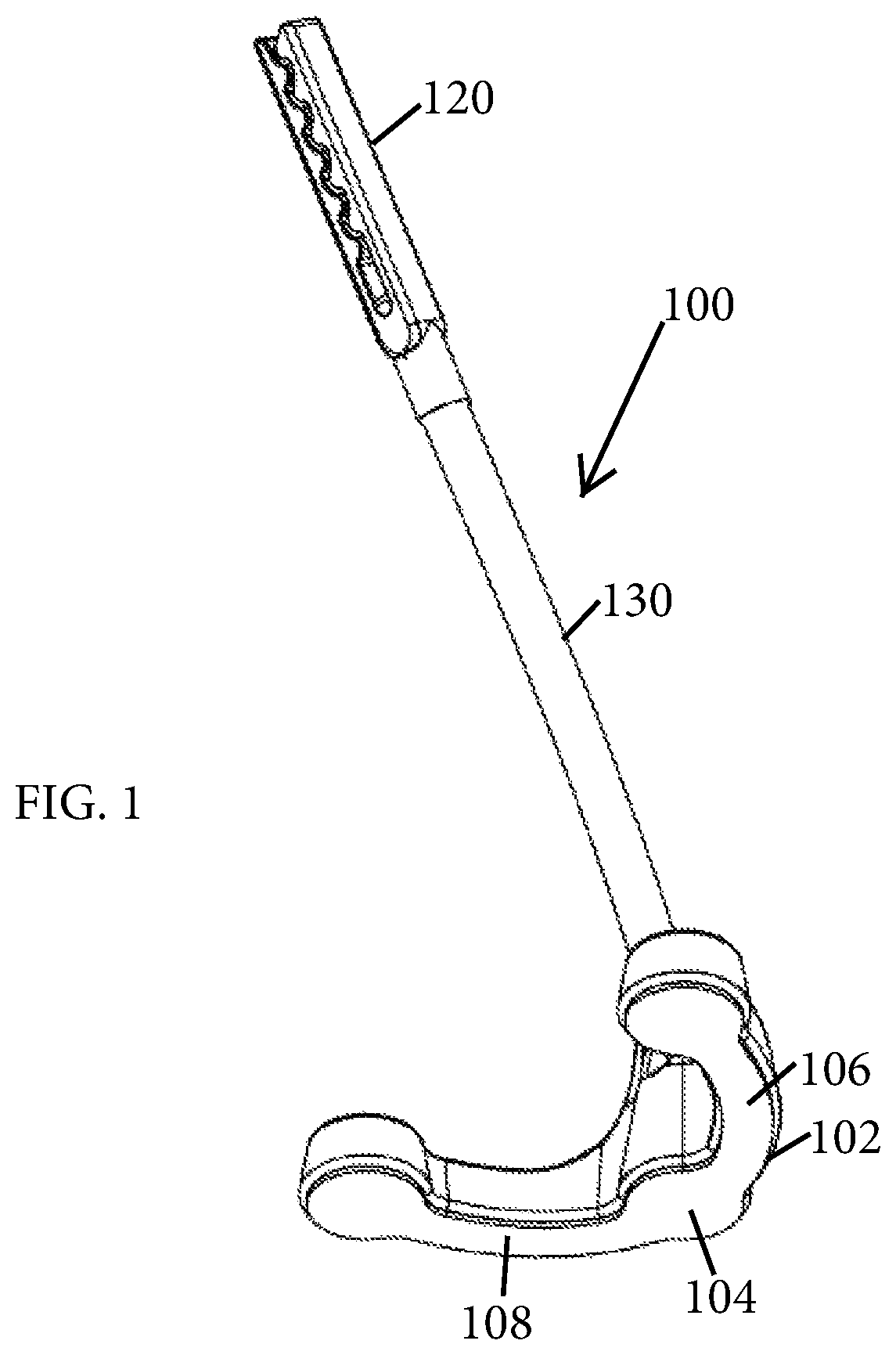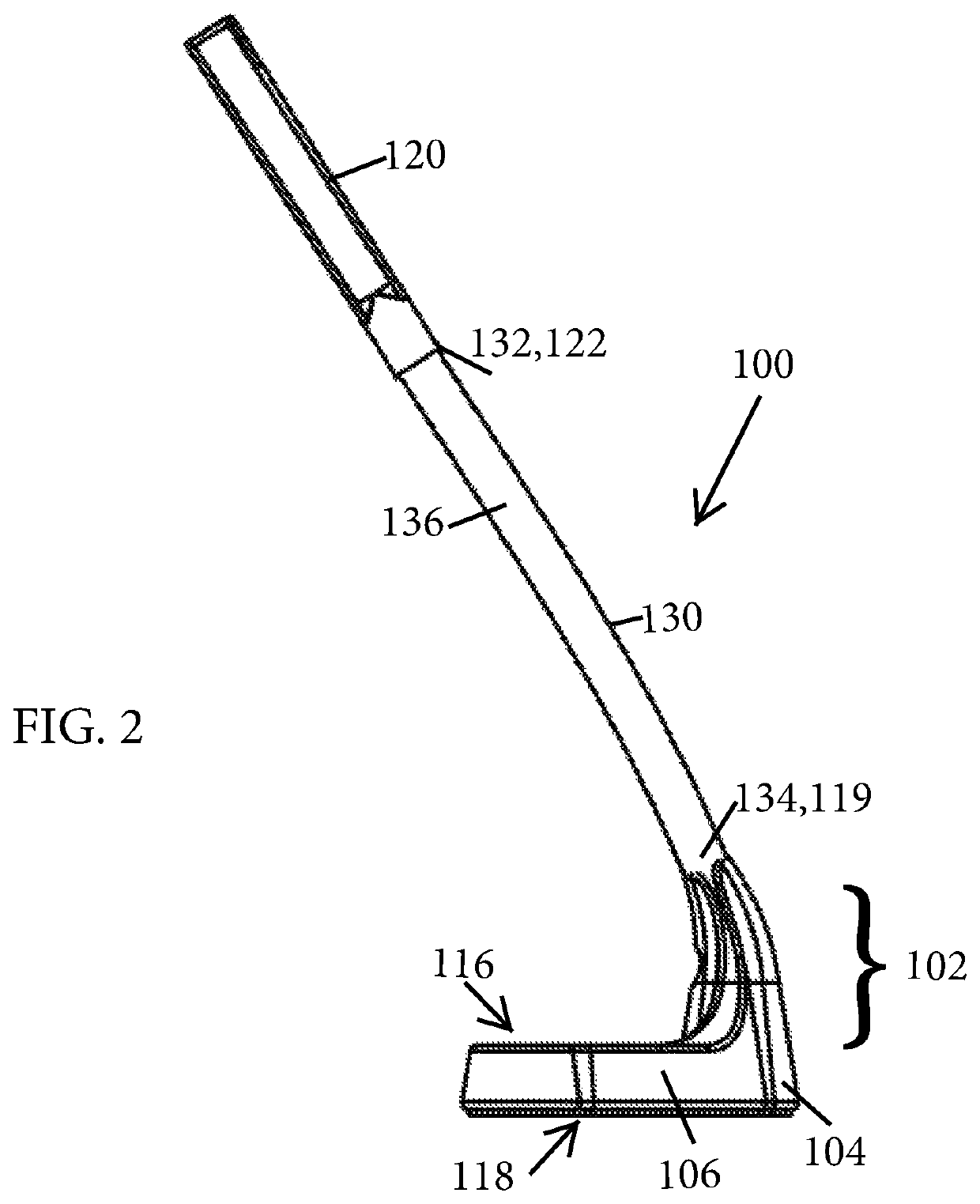Devices for supporting a medical instrument and methods of use
a technology for supporting devices and medical instruments, applied in the field of devices for supporting medical instruments and methods of use, can solve problems such as inability to meet the needs of patients, radiation exposure to procedure staff and patients, and procedural complications, and achieve the effect of less resistan
- Summary
- Abstract
- Description
- Claims
- Application Information
AI Technical Summary
Benefits of technology
Problems solved by technology
Method used
Image
Examples
Embodiment Construction
[0056]Various implementations include a device for holding and supporting a medical instrument 10 in a position. For example, the medical instrument 10 may include a percutaneous procedure apparatus, such as a needle (e.g., biopsy needle, anesthesia needle) or needle holder. In some implementations, the device holds and supports the percutaneous procedure apparatus and liberates the procedure operator's hands from direct beam exposure, which lowers the risk of complications and radiation exposure to patients and procedure operators. The device also increases the effectiveness of the procedure by holding and supporting the apparatus in the intended position.
[0057]Examples of a percutaneous procedure apparatus include a biopsy needle, such as a 21 g FNA to a 11 g bone biopsy trocar.
[0058]Various implementations of the device have sufficient flexibility and stability to hold and support the percutaneous procedure apparatus in the intended position, regardless of patient position, durin...
PUM
 Login to View More
Login to View More Abstract
Description
Claims
Application Information
 Login to View More
Login to View More - R&D
- Intellectual Property
- Life Sciences
- Materials
- Tech Scout
- Unparalleled Data Quality
- Higher Quality Content
- 60% Fewer Hallucinations
Browse by: Latest US Patents, China's latest patents, Technical Efficacy Thesaurus, Application Domain, Technology Topic, Popular Technical Reports.
© 2025 PatSnap. All rights reserved.Legal|Privacy policy|Modern Slavery Act Transparency Statement|Sitemap|About US| Contact US: help@patsnap.com



